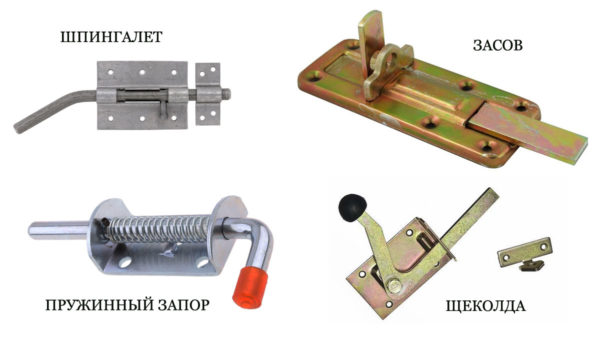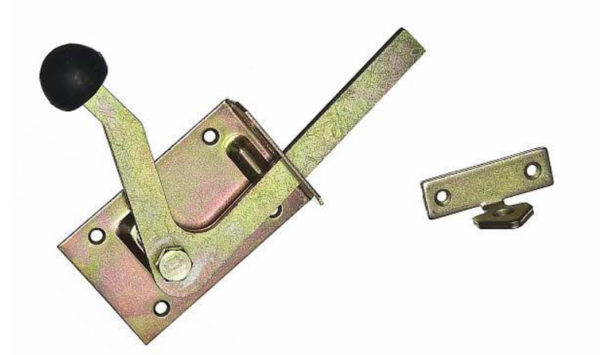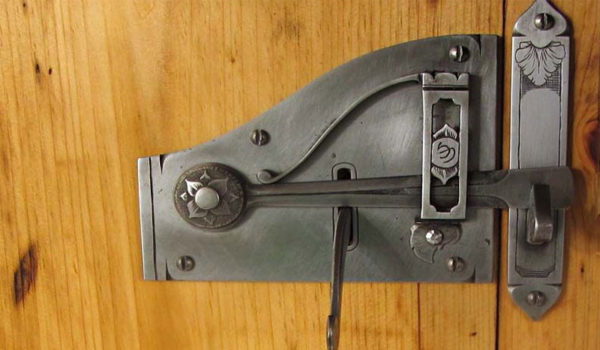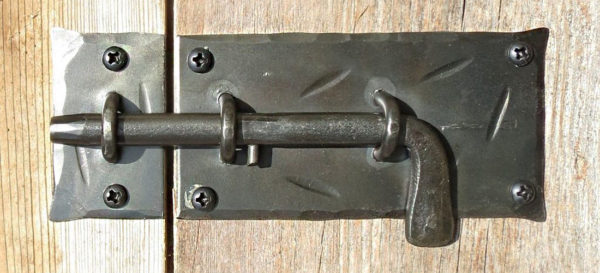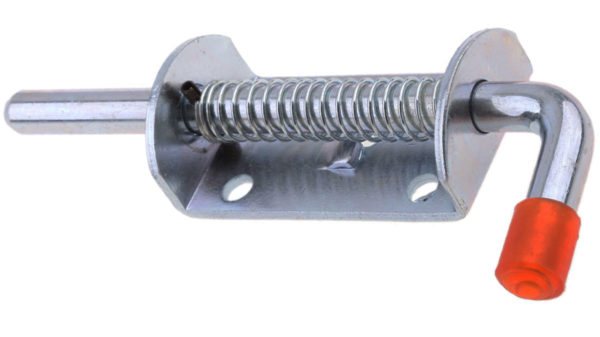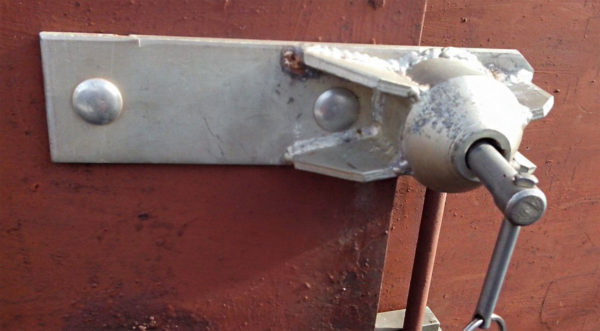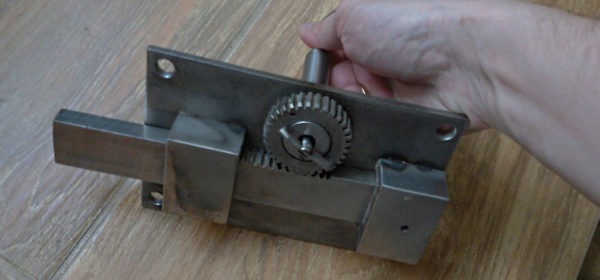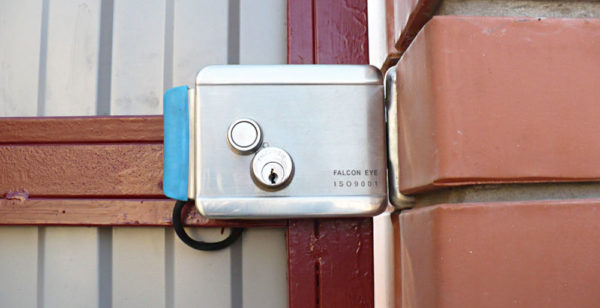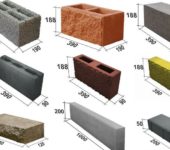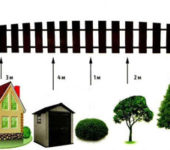We do the constipation on the gate ourselves
The gate is part of the fence, the purpose of which is to keep strangers from entering your area. Therefore, it must close. Constipation should be such that not only does it not open itself, but also ensures reliability and aesthetics. There are a lot of varieties and methods of constipation. Let's consider some of them and tell you how to do it yourself.
The content of the article
Types of constipation
There are many locks for street wickets on sale, each of which has its own characteristics, for example:
- Espagnolettes.
- Spring bolts.
- Heck.
You can also find electric door strikes on sale. Having a sufficient level of safety and reliability.
Self-production
If there is no desire or possibility of acquiring a locking mechanism, then you can construct a lock on the gate with your own hands. Most often, land owners prefer to independently produce:
- Self-closing gate latch.
- Locking device for wickets with latch and rope.
- Spring constipation.
- Secret lock.
- Screw lock.
The creation of each of the listed locks on a metal or wooden gate has its own characteristics.
Latch
The popularity of the gate latch is largely due to the effectiveness of such a device. There are many varieties of such constipation, and making it with your own hands from improvised means is quite simple. Here is one of them, it requires:
- We prepare the base of the locking mechanism in the form of a 3 mm thick plate with dimensions of 10 * 10 cm with holes along the edges ⌀ 3-4 mm.
- We weld in the middle by welding a bolt to it for fastening the latch.
- We make a flat and narrow plate with a thickness of at least 3 mm and a width of 3 cm. At the same time, its length should not exceed 10-15 cm and at the edge we drill a hole for a bolt.
- We fix the locking lever and, having installed it horizontally, weld the stop under it. The stop will not allow the lever to drop down.
- We attach the opening handle to the main locking plate.
- Fix the finished latch on the wicket door.
- We make a hook in the form of a triangle with a slot for the lock and fix it on the edge of the wicket opening, focusing on the position of the latch on the door. After installation, the locking lever must be free to move up and down.
- To open from the outside, pull the cord up the lifting lever.
Espagnolette
The wicket latch is one of the simplest and most common types of constipation. Such a valve can be one-way or two-way. The two-way valve has two control levers. The second is displayed on the street.
One-sided can only be used for locking from the inside, or if it is positioned high enough, it can be opened and closed from the top.
If performed in a double-sided version, then you can install it anywhere, if only it is convenient to use.
A metal rod 15–20 cm long and a tube along its diameter. For manufacturing, you need to prepare at least three rings. Two of them will be located on the wicket, and the third will be fixed to the edge of the fence. Although this is not necessary and the hole can fulfill its role.
Necessary actions:
- We make and attach metal rings in the right places. They can be fixed using a welded joint or by welding to the base and then bolted.
- We install the locking rod so that the opening of the wicket door is completely blocked.
- We weld an emphasis on the locking rod, which will also play the role of a handle.
- When installing a double-sided latch, we do everything on the plate.
- We weld two handles to the locking rod at once. In this case, the handle facing the street should be longer.
- We make fastening on the gate under the constipation.
- Cut out a slot for the handle and install the structure.
You can watch the video in more detail about the double-sided bolt:
Self-production should not be difficult. Such a constipation on a corrugated gate is especially convenient.
Spring bolt
In order to construct a spring bolt with your own hands, you must first prepare the necessary tools and materials. Of the tools you will need: grinder,
welding machine, hammer and drill, material - steel plate (3–4 mm thick and 10–15 cm long), steel rod (⌀ 10–12 mm), a piece of tube by the diameter of the rod, spring, cotter pin. Further:
- A piece of steel rod 20-25 cm long is cut off.
- Bend it at a right angle 5-10 cm from the edge.
- A steel plate is cut to the specified dimensions, after which two small guide rings from a 2 cm long pipe are welded onto it.
- Drill a ⌀3 mm hole in the steel bar for the cotter pin.
- Depending on which edge there will be a hole, the lock will open or close itself.
- The cut steel bar is inserted into the welded rings. While inserting the rod, put a spring and a washer on it. The washer should be on the side of the hole.
- The base plate for the mechanism is welded to the fence.
- A third ring from the tube is attached to the opening by welding, into which the bolt will enter. If the design allows, then you can simply drill a hole for the rod.
Varieties of constipation
In addition to the varieties described above, the following types of locking mechanisms are suitable for self-production:
- Screw lock. It is mounted from the outside. The locking mechanism includes a threaded rod, the base of the key variety. It has a specialized notch. The opening takes place using a special key that sets the locking system in motion. The screw type lock is quite simple to build yourself.
- Secret lock. With the help of a special key, a rotary gear mechanism is set in motion, which ensures the opening and closing of the door.
- Wicket lock with latch, cord in the inside. During installation, a latch is used, in the shutter of which there is a hole with a cord fixed in it. The other end of the cord is placed in an accessible place on the outside. To open the wicket, you need to pull on it.
When making one or another type of locking mechanism on your own, you need to carefully study the features of their design.
Features and varieties of automatic locking mechanisms
In the absence of even minimal experience and knowledge in the manufacture of wicket locks, it is better to purchase a ready-made device in a store. On sale you can find both simple locks, and for the functioning of which an electric current is required. Some have remote opening and closing options.
Electromechanical devices combine mechanical and electronic components. It is impossible to make such a lock with your own hands without electrical skills. The functioning is based on the work of an electromagnet. It looks like a patch lock, and the opening is done using a magnetic key or code.
But most often, to open the locking mechanism at the entrance, a pill key, an electronic card is applied or a code is entered.In the event of a power outage, the door can be opened from the inside by tapping the lock or, if provided, using an ordinary metal key.
The advantages of electromechanical locks include ease of use, high resistance to burglary, the ability to combine with an intercom, and the presence of a sound signal.

